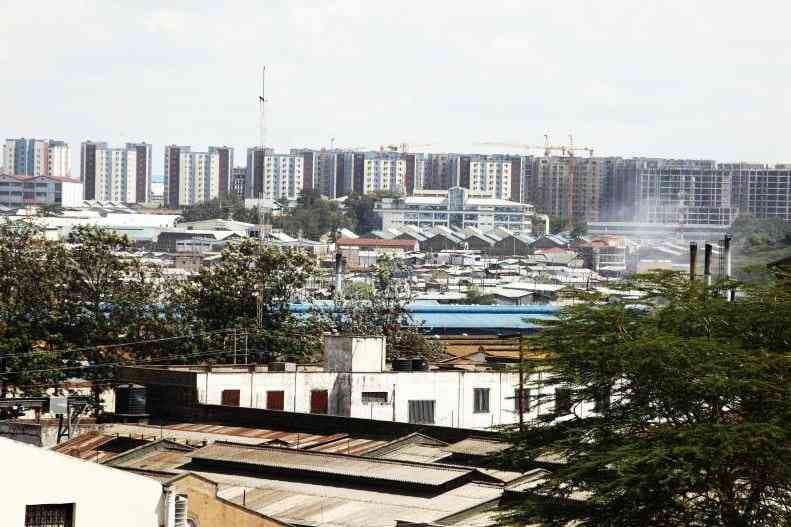We're loading the full news article for you. This includes the article content, images, author information, and related articles.
With rapid urbanization driving a construction boom, Kenya has launched a new National Building Code and supporting policies to enforce sustainable practices, aiming to cut the sector's significant carbon footprint and meet national climate goals.

NAIROBI, KENYA – As Kenya confronts one of the fastest urbanization rates in Africa, the government has initiated a sweeping overhaul of its construction sector regulations to mitigate a surge in greenhouse gas emissions. Central to this strategy is the enforcement of the new National Building Code 2024, a landmark policy designed to shift the industry towards sustainable, energy-efficient, and climate-resilient practices. This move comes as the nation grapples with a housing deficit of approximately two million units, a figure that grows by 200,000 annually, presenting both a monumental challenge and a critical opportunity for green development.
The global context underscores the urgency of this transition. According to a 2025 report from the United Nations Environment Programme (UNEP) released in Nairobi, the building and construction sector is a major driver of the climate crisis, accounting for 34% of global carbon emissions in 2023. In Kenya, the sector's local impact is similarly significant, contributing an estimated 30-40% of the country's carbon emissions. This legislative push is a core component of Kenya's commitment under the Paris Agreement to reduce its overall greenhouse gas emissions by 32% by 2030.
Effective from March 1, 2025, the National Building Code 2024 replaces an outdated legal framework from 1968. Spearheaded by the Ministry of Lands, Public Works, Housing and Urban Development and enforced by the National Construction Authority (NCA), the new code introduces mandatory requirements for sustainability. Key provisions include the integration of smart energy and water management systems, such as solar panels and rainwater harvesting, and the use of environmentally friendly materials. The code also mandates features for climate resilience, addressing risks like flooding and extreme heat, and requires new commercial buildings to include charging stations for electric vehicles.
David Waititu, Chief Architect at the State Department for Public Works, confirmed in October 2025 that a specific Green Building Standard is under development and expected to be operational within a year. This standard will provide detailed parameters for sustainable materials, energy efficiency, accessibility, and equipment. These regulations are further supported by the National Climate Change Action Plan and the proposed Climate Change Green and Resilient Buildings Regulations 2023, which aim to establish a dedicated green building unit within the government.
The policy shift is fostering innovation and the adoption of alternative and sustainable building materials across Kenya. Local companies and developers are increasingly turning to resources that lower the high "embodied carbon" associated with conventional materials like cement and steel. Among the most promising materials are:
Alongside materials, the integration of technologies like solar water heating systems—mandated by the Energy (Solar Water Heating) Regulations, 2012 for buildings with high hot water demand—and greywater recycling systems are becoming standard practice in new developments.
Government officials and industry leaders agree that collaboration with the private sector is essential for a successful transition. Developers, contractors, and financial institutions are being called upon to invest in and adopt sustainable practices. However, challenges such as the initial higher costs of green technologies and fragmented financing options remain. To address this, stakeholders are advocating for financial incentives like tax rebates, reduced permit fees, and the creation of accessible green financing products to make sustainable construction more economically viable for developers. The Kenya Private Sector Alliance (KEPSA) has highlighted the potential for green building projects to tap into the global carbon credit market, offering a new avenue for financing and profitability.
Organizations like the Kenya Green Building Society (KGBS) are playing a critical role in driving adoption through advocacy, training, and certification programs like EDGE (Excellence in Design for Greater Efficiencies), an innovation of the World Bank's IFC that simplifies the process of certifying green buildings. As of mid-2024, over 100 projects in Kenya were registered or certified as green buildings, a number expected to grow rapidly under the new regulatory regime. With these comprehensive measures, Kenya is positioning itself as a regional leader in sustainable development, aiming to build a resilient and low-carbon future for its rapidly growing urban population.
Keep the conversation in one place—threads here stay linked to the story and in the forums.
Other hot threads
E-sports and Gaming Community in Kenya
Active 7 months ago
Popular Recreational Activities Across Counties
Active 7 months ago
The Role of Technology in Modern Agriculture (AgriTech)
Active 7 months ago
Investing in Youth Sports Development Programs
Active 7 months ago